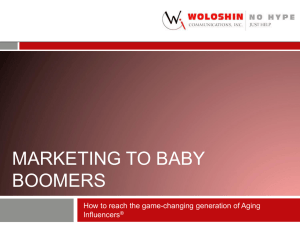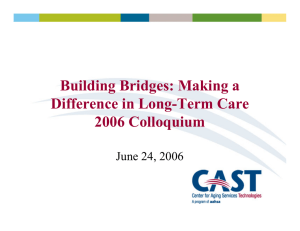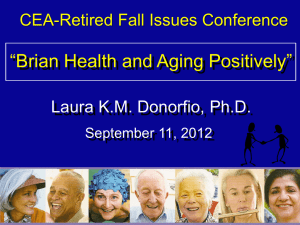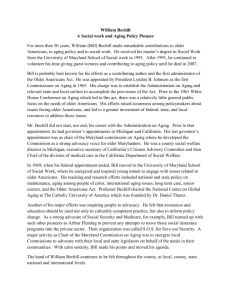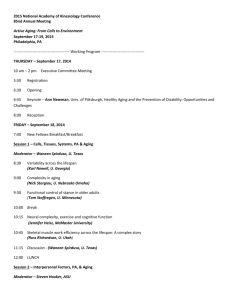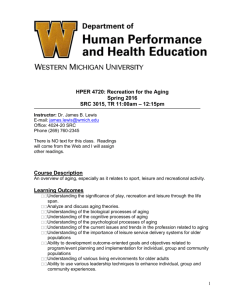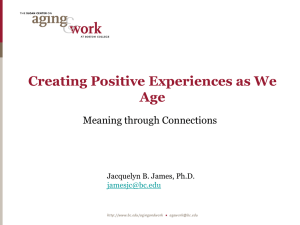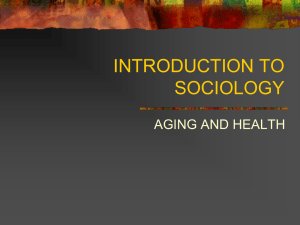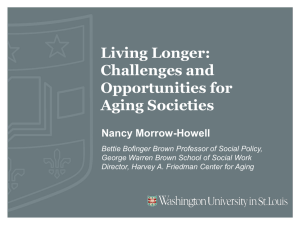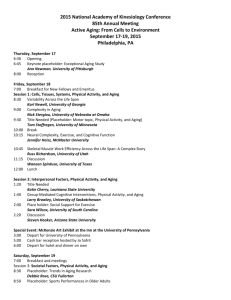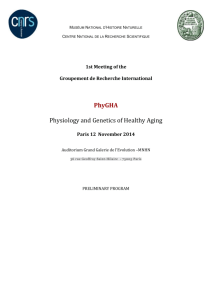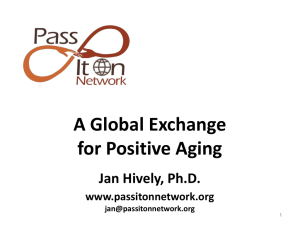DRCOG`s Boomer Bond - Denver Regional Council of Governments
advertisement
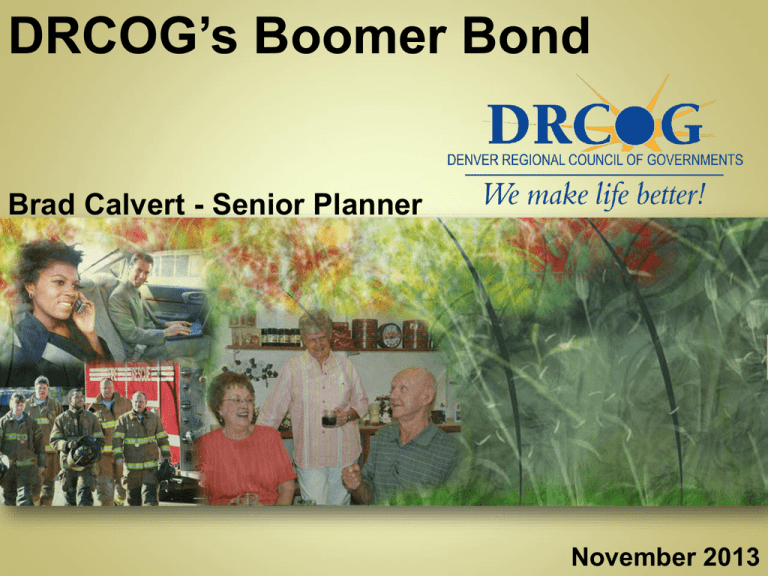
DRCOG’s Boomer Bond Brad Calvert - Senior Planner November 2013 DRCOG Overview Non-profit, public agency dedicating to serving local governments Local officials working together to address the region's challenges Each community has voice in regional decision-making Program areas: Advocacy Aging Services Environment Regional growth and development Shared services Transportation and traffic operations • Colorado’s growth in 65+ population 4th fastest nationally (2000 – 2010) • 85+ fastest growing among that group • 2010-2020 growth rate will be nearly twice as much 2000-2010 • Growth in older adult population will outpace other age groups for the next 20 years % of Population 60 and Older 25% 2006: 1st Boomers turn 60 20% 15% 10% 5% 0% 1990 1995 2000 2005 2010 2015 2020 2025 2030 Source: 2010 Community Assessment Survey for Older Adults (CASOA) – National Research Center How likely are you to remain in the community throughout retirement? 61% 25% Very likely Somewhat likely 7% 7% Somewhat unlikely Very unlikely 53% have lived in their community for more than 20 years 80,000 74,529 70,000 60,000 56,208 55,579 50,000 40,803 40,000 30,000 28,682 27,830 20,000 15510 10,000 8483 0 Less than $15K 7770 8242 $15K to $30K to $45K to $60K to $75K to $100K to $125K to $150K to $200K+ $30K $45K $60K $75K $100K $125K $150K $200K Outlook on Life mental health self-efficacy valued by community spirituality Physical Health physical activity nutrition/food security activities of daily living Aging Well Connection practical support social support engagement in life hobby • Communities can facilitate or create barriers to successful aging • Promote physical activity and community engagement • Reduced burden on caregivers • Age-friendly communities benefit all ages • Boomer Bond will support local efforts 1. A community assessment tool to facilitate local dialogue and identify priorities 2. A comprehensive set of policies, strategies and tools for local governments to consider 3. A voluntary recognition program to highlight local efforts 4. A voluntary regional agreement to meet the growing needs of an older adult population Topic Area Brief Description Community design for active aging Promote local strategies that integrate physical activity into daily routines Community engagement and education Identify opportunities that embrace the potential contributions of older adults Housing Develop strategies to assist communities in providing affordable, accessible housing options Mobility and access Ensure older adults have safe and convenient transportation options Safety and security Document strategies to make older adults comfortable in navigating their surroundings Support systems Maximize capacity of local governments and partners to support independent aging Neighborhood environment has greatest impact on older adults Nearly 50% report difficulty crossing main roads Walking is most common form of physical activity Almost half of older adult falls occur outside the home ($9K per fall) Understanding of what community engagement means at the local level Communicating opportunities for engagement, particularly to isolated persons Managing volunteers and volunteer activities Difficulty reentering workforce Older adults prefer to remain in their homes and communities Consumer demand for agefriendly design often comes when there is an immediate need Lack of range of housing options in many communities Lack of affordable housing alternatives One-third spend too much on housing Current system is auto- dominated Nationally 21% of 65+ do not drive Limited public transportation options/cost of specialized transit Men outlive their driving years by 7 years, women by 10 Older adults with disabilities remaining in communities Many older adults lack confidence to leave home to complete daily tasks Increasingly targeted for consumer fraud Personal safety identified as key barrier preventing transit trips Effectively leveraging existing programs Older adults prefer to remain in their homes and communities Wide array of groups providing community-based support Status quo for assisting seniors is unsustainable Efforts to slow growth in Medicaid spending will add pressure to community-based networks • Significant outreach to community leaders • Community Assessment tool 25+ meetings with multi-disciplinary teams to develop and review Working “professional” version • Pilot communities (3) • Selected TCHD to further program development http://www.lyonsfightsback.org Key Inputs • Previous feedback from Project Teams • Pilot community experience and debrief session • TCHD experience with similar tools • “Conversation starter” at the local level (including partners) • Provide structure to what might be an otherwise overwhelming conversation • Resource for local staff leading initiative • First step in defining “problem statement” and/or local priorities for action Easy transition from assessment to action (think of documents as a pair) Helps with “what next” questions Turning a “NO” to “YES” Expandable, current, and locally relevant Your input is needed to ensure a quality/useful project Learn what happened after the Project Teams completed the first version of the assessment tool Share inputs into the reorganization of the tool Learn from your experiences Develop common understanding of toolkit purpose and what’s important to the group Provide feedback on initial toolkit concepts DRCOG’s Boomer Bond Brad Calvert - Senior Planner November 2013
